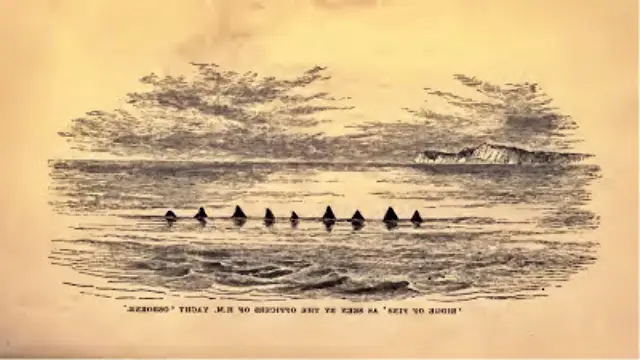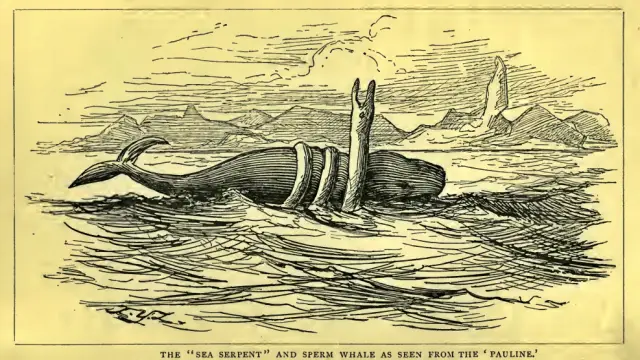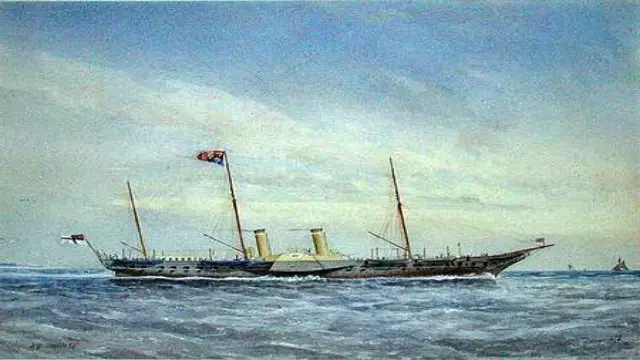The Mysterious Sea Monster of 1877: What Did They See?
In June 1877, the Lords Commissioners of the Admiralty received an intriguing report. Officers aboard the Royal Yacht Osborne claimed to have seen an unidentified marine creature off Cape Vito, Sicily. This strange event sparked curiosity among scientists and naval experts alike. Let’s dive into this fascinating story.
What Happened That Day?
On June 2, 1877, officers on the Osborne spotted something unusual in the water. The descriptions varied slightly, but all agreed it was massive. Here’s what they reported:
Commander Pearson’s Account
Through his telescope, Commander Pearson saw:
- A seal-shaped head of immense size.
- Large flappers (fins).
- Part of a huge body about 400 yards away.

Lieutenant Douglas Forsyth’s Report
Forsyth described:
- A black object about two cables (480 yards) away.
- A head 15–20 feet long with a round crown.
- Two large flappers propelling the creature like a seal.
- A visible portion of the body measuring 45–50 feet.
Lieutenant Haynes’ Observation
Haynes noticed:
- A ridge of fins extending 30 feet above the water.
- A head six feet thick and a neck four to five feet wide.
- Flappers each 15 feet long.
- Movements resembling those of a turtle or seal.
Mr. Moore’s Perspective
Moore, the ship’s engineer, added:
- An uneven ridge of fins stretching 40 feet along the surface.
- Heights of seven to eight feet above the water.
Despite differences in detail, these accounts share common elements: size, shape, and movement.
Seeking Expert Opinions
To make sense of these reports, the Admiralty turned to experts. Among them were Frank Buckland, Richard Owen, and other notable figures.

Richard Owen’s Take
Owen, a renowned zoologist, noted discrepancies between the accounts. He suggested that:
- Observers used telescopes differently.
- Both the creature and observers were moving at unknown speeds.
He concluded the creature was likely a species of cetacean (whale or dolphin).
A.D. Bartlett’s View
Bartlett, from the Zoological Gardens, disagreed with Owen. He argued:
- Naval officers are reliable witnesses.
- The “flappers” ruled out serpents.
- Seals and sea-lions don’t use their front flippers for swimming.
He speculated the creature might be entirely new to science, possibly a large fish-lizard similar to fossils displayed under Owen’s supervision.
Henry Lee’s Theory
Lee leaned toward the idea of a giant squid, citing recent discoveries of enormous decapods. However, he admitted the Osborne sighting remained mysterious.
Frank Buckland’s Final Verdict
After careful analysis, Buckland proposed a practical explanation: three or four basking sharks swimming together. These gentle giants often appear in the Mediterranean and could explain the size, fins, and flappers observed.
Why Does This Matter?
This incident is more than just a historical curiosity. It highlights humanity’s enduring fascination with the unknown depths of the ocean. Even today, cryptozoology—the study of hidden animals—thrives because we know so little about our planet’s waters.
Lessons Learned
- Human Perception Can Be Flawed: Different people interpret the same event differently.
- Science Evolves: Experts once dismissed tales of giant squids until evidence proved otherwise.
- Exploration Continues: Much of Earth’s oceans remain uncharted, leaving room for discovery.
The Legacy of the Osborne Monster
While the Osborne monster may never be fully explained, its story inspired future generations. Henry Lee later wrote Sea Monsters Unmasked (1883), blending science and folklore to explore such mysteries. His work remains a cornerstone of early cryptozoological research.
Could It Happen Again?
Absolutely! Modern technology allows us to capture clearer images and videos of marine life. Yet, every year brings new sightings of sea serpents, mysterious whales, and other enigmatic creatures. Who knows what lies beneath?
Conclusion
The 1877 sighting near Cape Vito reminds us how little we truly understand about the ocean. Whether it was basking sharks, a giant squid, or something entirely unknown, the mystery endures. As scientists continue exploring, one thing is certain: the sea holds secrets waiting to be uncovered.
So next time you’re by the water, keep your eyes peeled—you might just spot something extraordinary!
If you enjoyed this deep dive into maritime mysteries, share your thoughts below! Have you ever heard of another sea monster sighting? Let’s discuss!

